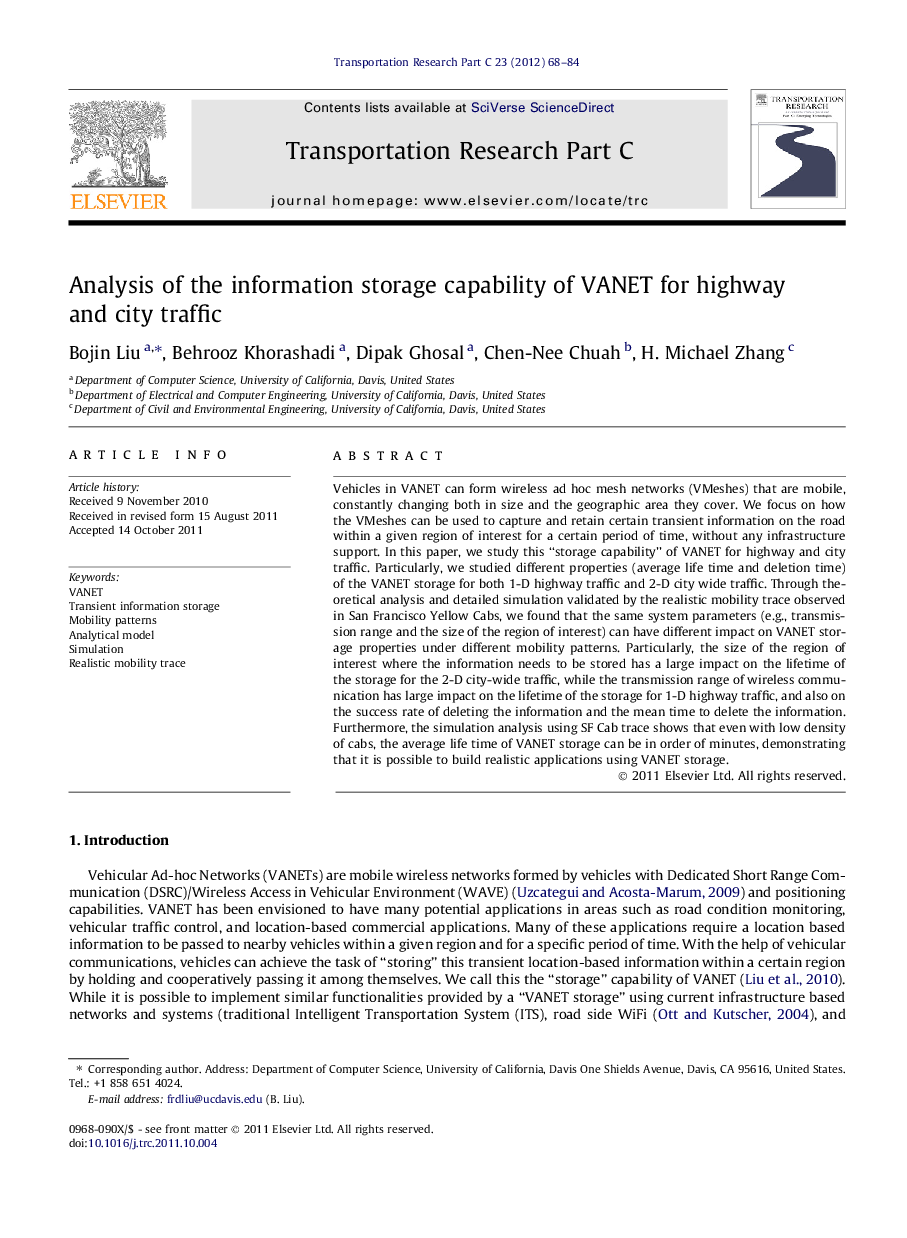| Article ID | Journal | Published Year | Pages | File Type |
|---|---|---|---|---|
| 526594 | Transportation Research Part C: Emerging Technologies | 2012 | 17 Pages |
Vehicles in VANET can form wireless ad hoc mesh networks (VMeshes) that are mobile, constantly changing both in size and the geographic area they cover. We focus on how the VMeshes can be used to capture and retain certain transient information on the road within a given region of interest for a certain period of time, without any infrastructure support. In this paper, we study this “storage capability” of VANET for highway and city traffic. Particularly, we studied different properties (average life time and deletion time) of the VANET storage for both 1-D highway traffic and 2-D city wide traffic. Through theoretical analysis and detailed simulation validated by the realistic mobility trace observed in San Francisco Yellow Cabs, we found that the same system parameters (e.g., transmission range and the size of the region of interest) can have different impact on VANET storage properties under different mobility patterns. Particularly, the size of the region of interest where the information needs to be stored has a large impact on the lifetime of the storage for the 2-D city-wide traffic, while the transmission range of wireless communication has large impact on the lifetime of the storage for 1-D highway traffic, and also on the success rate of deleting the information and the mean time to delete the information. Furthermore, the simulation analysis using SF Cab trace shows that even with low density of cabs, the average life time of VANET storage can be in order of minutes, demonstrating that it is possible to build realistic applications using VANET storage.
► WAVE enabled vehicles can form transient “storages” through cooperative communication. ► Theoretical analysis of mean storage lifetime for 1-D highway and 2-D city traffic. ► Examine storage lifetime through simulation with real SF Cab traffic trace. ► Analyze and evaluate storage deletion time.
